
Heptapleurum delavayi
Happy New Year! While meteorologists are mostly in agreement that in our area an El Niño winter will produce milder than average temperatures and plenty of rain, January brings a certain amount of weather uncertainty. This is normally our coldest month, and severe weather can arrive with little warning. So, again, I’ll play it safe and highlight our diverse collection of resilient, cold-hardy, broadleaf evergreens. Even so, I should probably mention that at least three noteworthy and normally-January-blooming deciduous shrubs started flowering in early December: Viburnum x bodnantense ‘Dawn’ on the west side of the Roseline Sturdy Amphitheatre plantings, Lonicera x purpusii ‘Winter Beauty’ beside the boardwalk on the east side of the Reception Centre, and Chimonanthus praecox (winter sweet) a few steps northwest of the Moon Gate. Each of these is frequently recognized by its powerful fragrance well before it actually comes into view. If the mild weather holds, they may be flowering well into January.
One of our largest broadleaf evergreens is Trochodendron aralioides (wheel tree). There are several in the David C. Lam Asian Garden. A stately native of both Taiwan and Japan, the wheel tree can grow to 20 m or more in the wild. Our largest, which date from the early 1970s, are well over 8 m tall. One is on Lower Asian Way at Wharton Trail and the other on Upper Asian Way at Handel-Mazzetti Trail. The derivation of the common name is readily grasped by looking at the cup-like seed capsules, which have spoke-like appendages. Although the specific epithet, aralioides, suggests a connection with the aralias, the similarities are only superficial. There are, however, several interesting evergreen aralids (members of the spikenard family, Araliaceae) in the garden.
Besides the common fatsia (Fatsia japonica), and the evergreen ivies (Hedera species)—neither of which are in our collections (the ivies because of their notorious invasiveness and the fatsia because we’ve never acquired known-provenance plants)—the Asian scheffleras (Heptapleurum species) are probably the most recognizable of this clan. In terms of cold hardiness, we’ve lost our fair share of heptapleurums, but the surviving few species are mostly tough plants. Without doubt, the hardiest is the magnificent Heptapleurum delavayi (Delavay schefflera), which is native to the mountains of southern China and northwestern Vietnam. Noted for its broad, low crown of hefty, palmately compound leaves, this individual at the southern end of Wharton Glade has never seen damage (though some years ago, during another wet El Niño winter, it fell over and required propping up). Nearby, toward Lower Asian Way on Ludlow Trail, is the markedly-different Taiwanese endemic Heptapleurum taiwanianum (Taiwan umbrella tree). Though this specimen is definitely tree like, the species is typically shrubby and structurally more like our H. delavayi. The weird, bean-pole-like growth is due to the fact that branching is normally suppressed until a branch has produced flowers (flowering terminates the growth on that stem, causing energy to be transferred to side shoots). Note, for example, that H. delavayi is well branched and there is evidence of past flowering. The more important question is why H. taiwanianum is so reluctant to flower. Not warm enough, maybe? The name Heptapleurum was given to the Asian scheffleras because many species display seven leaflets per leaf (Greek: heptapleurum = seven ribs). The Taiwan umbrella tree produces up to eleven long, narrow leaflets.
Heptapleurum fengii (speaking of bean-poles), which is near the corner of Decaisne and Forrest Trails, has a single stem that is now approaching 5 m in height, with no sign of slowing down (or of flowering!). Like all heptapleurums, the leaves of Feng’s umbrella tree are palmately compound. A classic, shade-adapted evergreen, its long stalks allow its leaves to spread out all around the stem and its leaflets to splay, all of which helps to avoid self-shading and maximize light interception. Perhaps the strangest of our Asian scheffleras is one we’re calling Heptapleurum aff. gracilis (aff. means “affinity”). Tucked in behind a group of Hydrangea febrifuga (dichroa) near the corner of Siebold and Rock Trails, this species has strikingly dark green, oblong leaflets on somewhat descending leaves that are widely spaced on slender, weak, wandering stems. Judging by the unusual structure, the species is likely a scandent climber (the scandent mode of growth describes a clambering manner). Its supple shoots are able to push through dense twigs, while the descending petioles hook over the branches to effectively hold up the stems.
A fifth Asian schefflera—Heptapleurum minutistellatum—is somewhat less reliable in frigid weather (the last two winters all but killed an established plant next to the boardwalk), but one specimen—admittedly in an exceptionally sheltered position by the hairpin turn on Straley Trail—has done exceptionally well. This species, which is also native to southern China and Vietnam, is worth a second look for its “second storey” leaflets. These are half-size leaflets produced after the fact, seemingly to fill the spaces between the larger ones. Very neat.
Our rarest evergreen aralid is the Taiwanese Sinopanax formosanus. Clearly a much hardier shrub than anticipated (in 2018 we doubted it would survive its first winter), our small plant is located just east of the Campbell Building in a sea of epimedium, and appears healthy and attractive. The leaves, an unusual shade of greyish green, are irregularly, but neatly jagged-lobed. In spring, the new growth is covered by a soft pelt of silvery hairs, which eventually turns tawny-brown. The hairs are gradually lost from the upper leaf surface, but remain on the undersides and stalks. Lastly, one of the most surprising aralids in the Garden is the shape-shifting Metapanax davidii, which is native to the mountains of southern China and northern Vietnam. Poorly known in cultivation, it is a handsome small tree where it’s native. Early growth is shrubby and the leaves are coarse and distinctively three-lobed. With time and increasing maturity, plants become more arborescent (tree like), and gradually produce fewer leaves that are three-lobed. Our plants (on Maries Trail near Farges, on Upper Asian Way at Kingdon Ward Way, and on Delavay Trail near the Forest Amphitheatre) show the transition well, each displaying various combinations of three-lobed and two-lobed, as well as completely unlobed leaves. In a few years these trees should have a complement of only small, elliptic leaves, and be ripe for the inevitable How come I never noticed that tree before?
- Heptapleurum delavayi
- Heptapleurum minutistellata
- Trochodendron aralioides
- Metapanax davidii
- Aucuba chinensis var. chinensis
- Chimonanthus praecox
- Heptapleurum taiwaniana
- Heptapleurum minutistellata
- Heptapleurum aff gracilis
- Sinopanax formosanus
- Viburnum x bodnantense Dawn
- Heptapleurum fengii
Submitted by: Douglas Justice, Associate Director, Horticulture and Collections

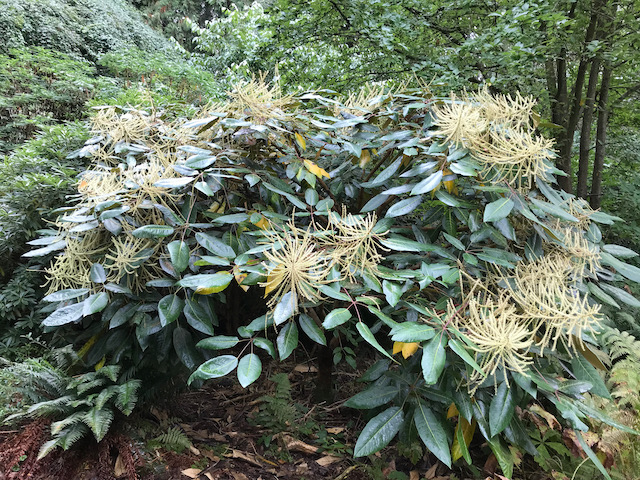
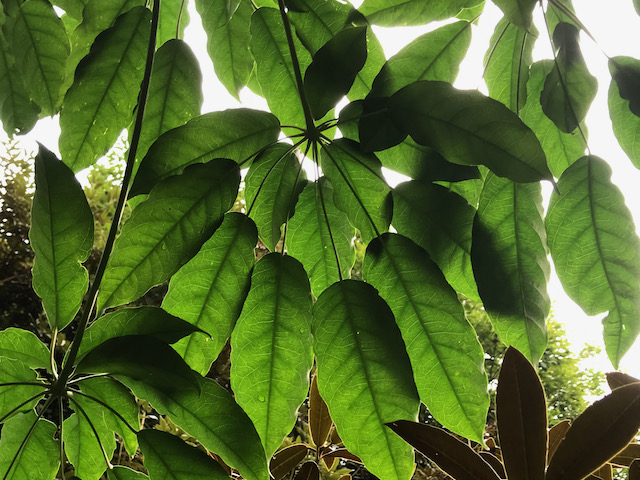
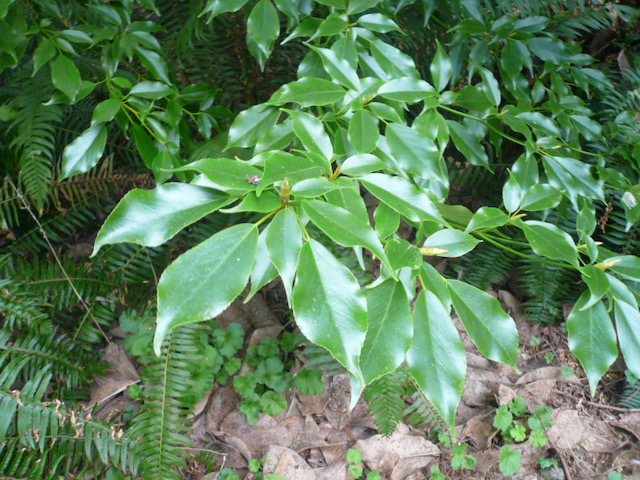

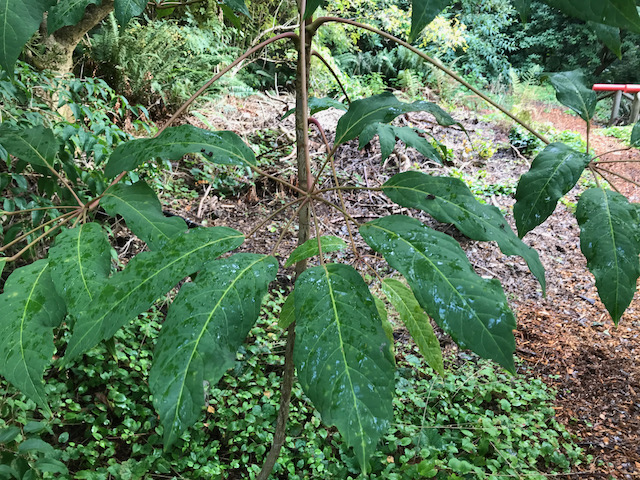
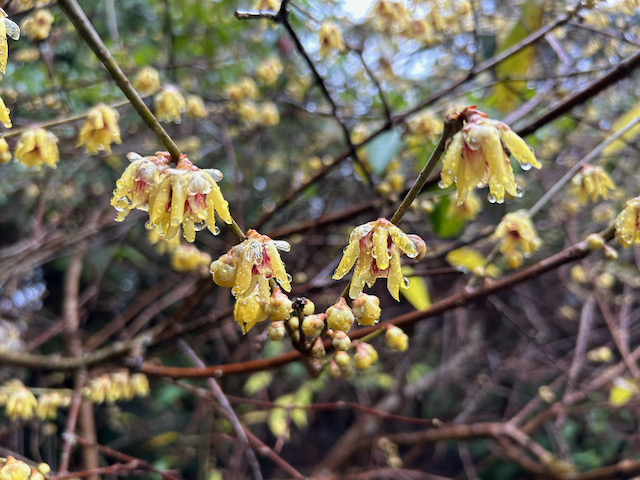

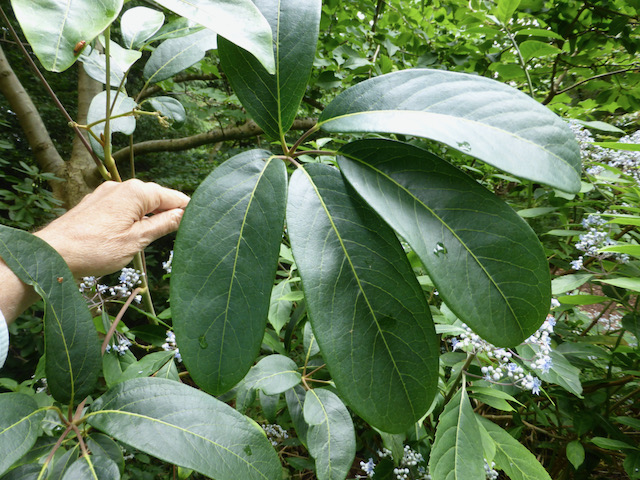
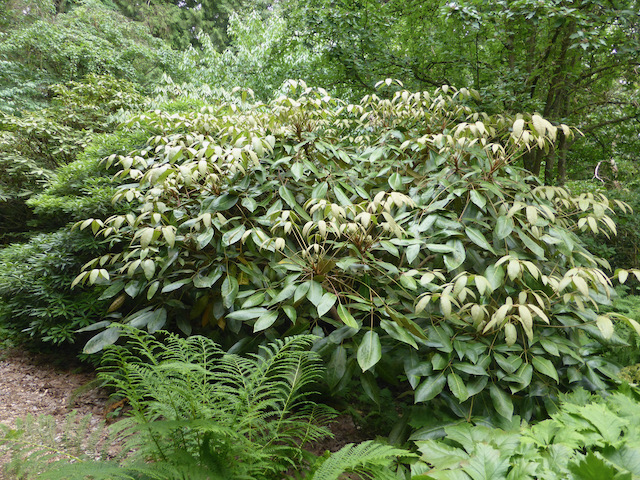

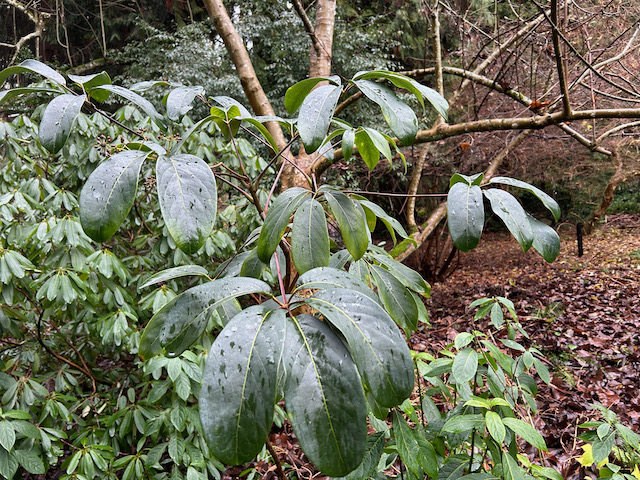
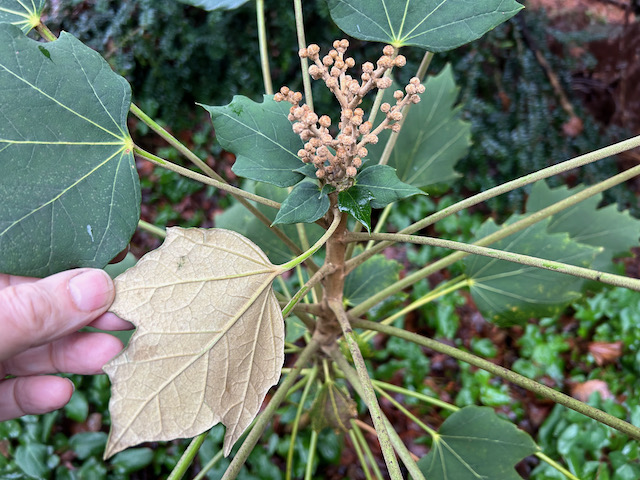

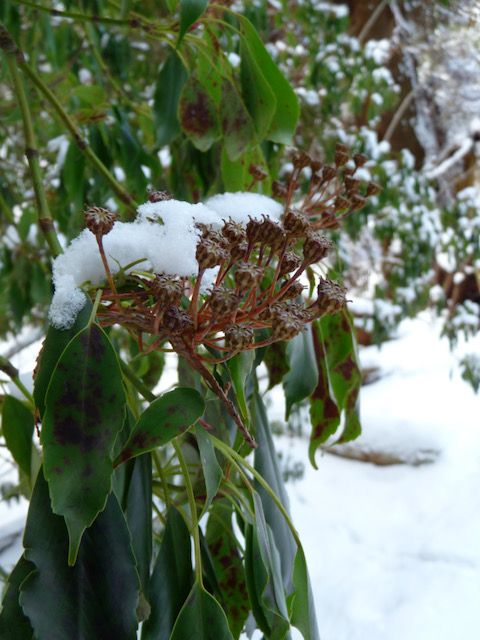
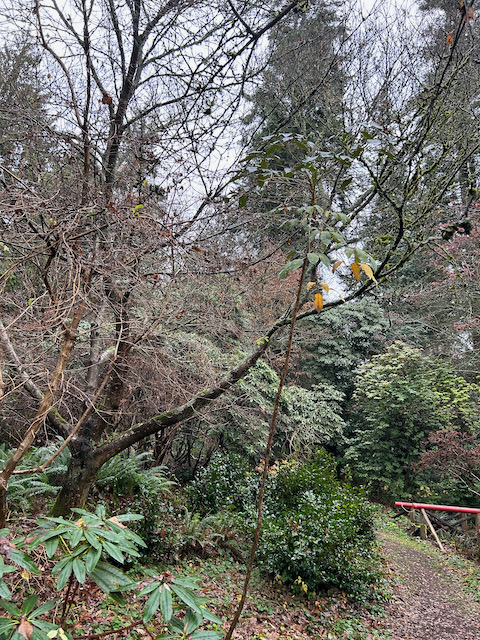
A very interesting piece. Thank you. I noted the mention of early, out of season blooming. This interested me because my Holiday Cactus plants have been blooming way out of season. An Easter plant bloomed for Christmas, a Christmas plant bloomed for Thanksgiving, and another Easter plant started blooming before Christmas and is still blooming!
Dear Sir/Madam
Loved your plant posts for January – some very exciting plants. I am trying to make contact with Douglas Justice Associate Director about some question on the genus Mahonia. We met a few years ago when I visited UBC and he kindly gave me a superb guided tour of the gardens and plant collection. We first met at the Savill Garden in the 1980’s when I was a student at RBG Kew. Any help most welcome
best wishes
John